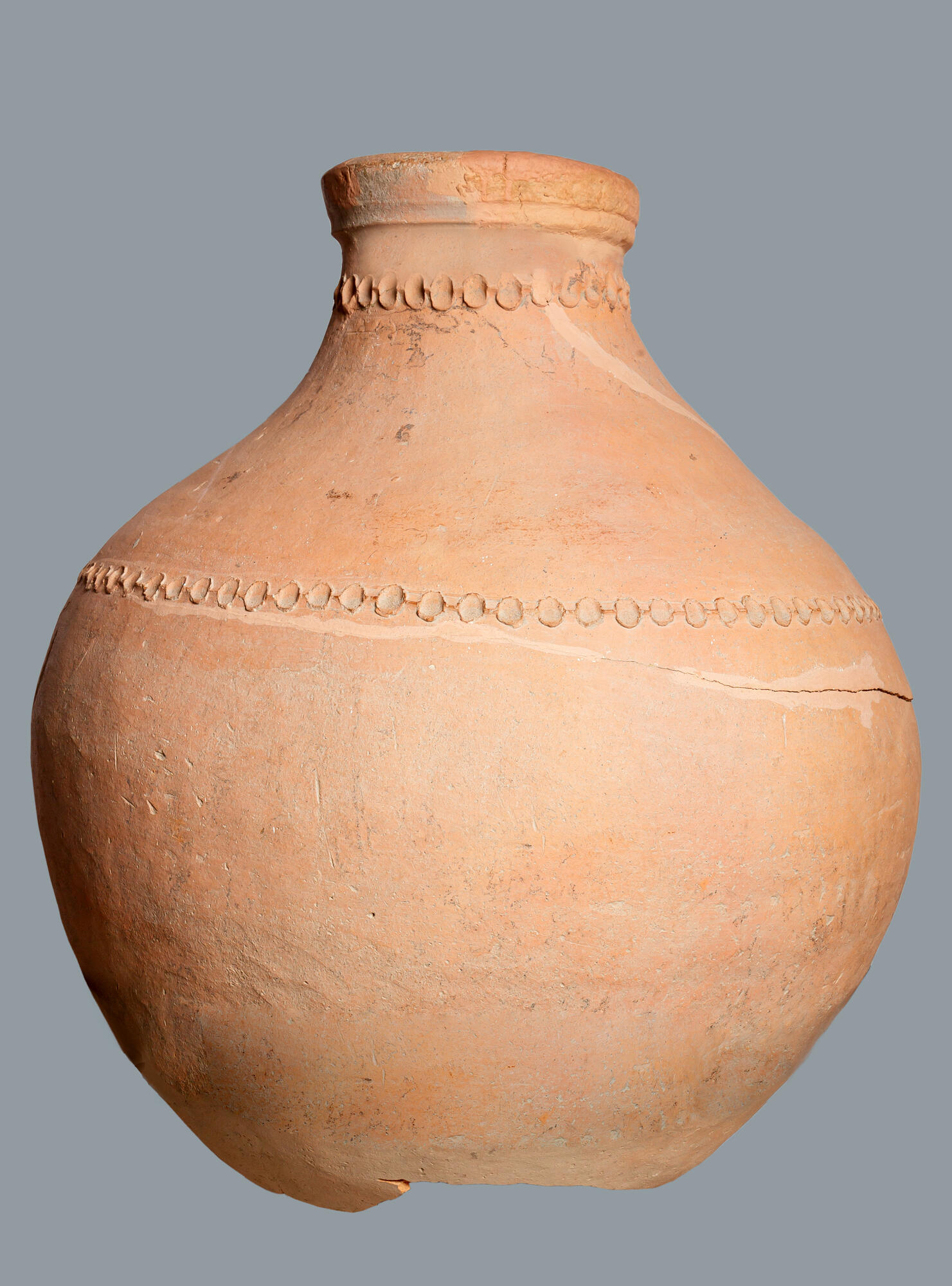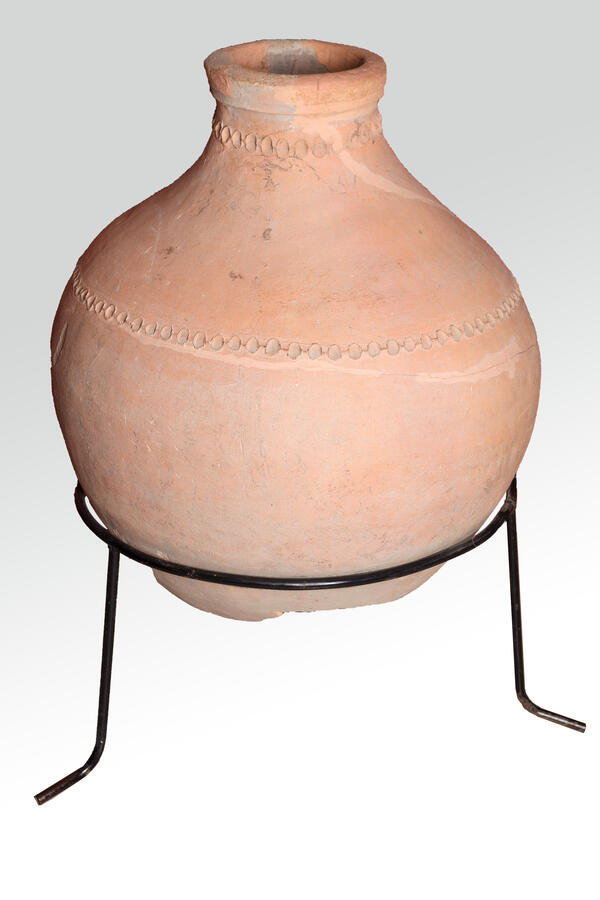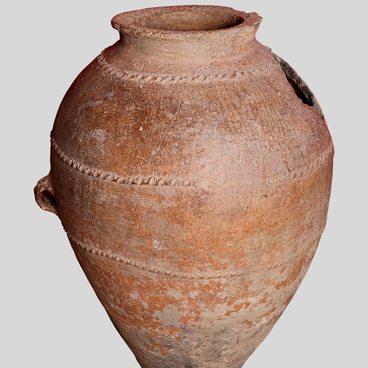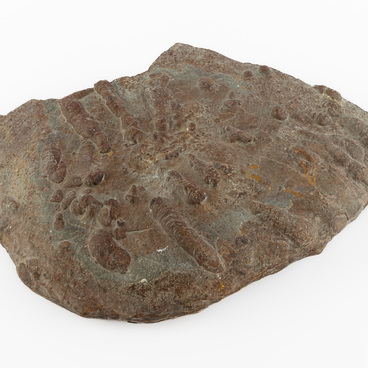The first pithoi — storage vessels for grain, water, wine, and salted fish — appeared in ancient Greece. During the Greek colonization, Greek settlers brought them to the Black Sea coast of the Caucasus. However, over time, some of the vessels were no longer brought but made in the local region.
In ancient times, pithoi could have enormous sizes: they could reach 3 meters in height. And the size of medieval pithoi rarely exceeded 1.5 meters, and their volume was much smaller. Such vessels could be used for long-term storage or transportation of products; many pithoi were made with a flat, stable bottom. A pithos would often be partially buried in the ground, to maintain constant temperature. Grain remained fresh in pithoi for a long time, so large volumes could be stored in such jars for months. Local peoples quickly appreciated all the advantages of these vessels.
Like amphorae, pithoi were widespread in the Mediterranean, the Black Sea, the Caucasus and Central Asia. In the Mediterranean, vessels were sometimes decorated with relief images depicting mythological and everyday scenes. On the Black Sea coast of the Northwest Caucasus, pithoi were usually adorned with a simple pattern consisting of lines and stripes going in different directions. Often the surface of the vessel was simply smooth. Along with flat-bottomed vessels, narrow-footed pithoi with smoother walls became common during the Middle Ages. They were no longer used as shipping containers.
The museum displays a pithos with a pattern of finger-shaped or molded “medallions”. This pattern is most often found on imported pithoi, which were superior in quality to local jars. As a rule, they were made of better clay, which was not as fragile as the local one. The vessel was discovered in July 1954 during agricultural work on the site of the Voroshilov collective farm in the village of Aderbievka.
Despite being fairly common, pithoi were considered a valuable thing in the household, so people took care of them in every possible way. Some finds had so-called patches — a cracked pithos had been repaired with lead rivets. If a vessel became unsuitable for storing food, then a spindle whorl or a fishing sinker could be made from its shards and used for a long time.
In ancient times, pithoi could have enormous sizes: they could reach 3 meters in height. And the size of medieval pithoi rarely exceeded 1.5 meters, and their volume was much smaller. Such vessels could be used for long-term storage or transportation of products; many pithoi were made with a flat, stable bottom. A pithos would often be partially buried in the ground, to maintain constant temperature. Grain remained fresh in pithoi for a long time, so large volumes could be stored in such jars for months. Local peoples quickly appreciated all the advantages of these vessels.
Like amphorae, pithoi were widespread in the Mediterranean, the Black Sea, the Caucasus and Central Asia. In the Mediterranean, vessels were sometimes decorated with relief images depicting mythological and everyday scenes. On the Black Sea coast of the Northwest Caucasus, pithoi were usually adorned with a simple pattern consisting of lines and stripes going in different directions. Often the surface of the vessel was simply smooth. Along with flat-bottomed vessels, narrow-footed pithoi with smoother walls became common during the Middle Ages. They were no longer used as shipping containers.
The museum displays a pithos with a pattern of finger-shaped or molded “medallions”. This pattern is most often found on imported pithoi, which were superior in quality to local jars. As a rule, they were made of better clay, which was not as fragile as the local one. The vessel was discovered in July 1954 during agricultural work on the site of the Voroshilov collective farm in the village of Aderbievka.
Despite being fairly common, pithoi were considered a valuable thing in the household, so people took care of them in every possible way. Some finds had so-called patches — a cracked pithos had been repaired with lead rivets. If a vessel became unsuitable for storing food, then a spindle whorl or a fishing sinker could be made from its shards and used for a long time.





